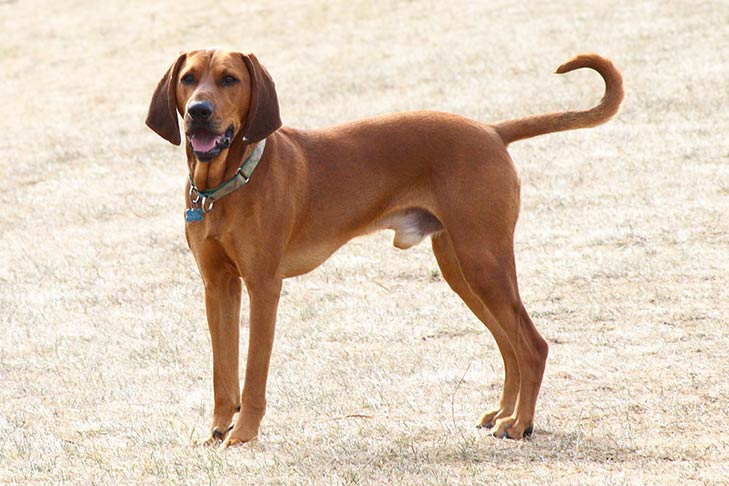The sleek Redbone Coonhound, an American original, is patient, polite, and even-tempered indoors but is a tiger outdoors. The rhythm of a coonhound’s life alternates between vigorous activities like swimming and hunting. Redbones are medium- to large-sized hound dogs with muscular undertones and a striking red exterior. The overall impression is that they were carved from blocks of the finest mahogany by a skilled sculptor. Ears that can reach the nose flank the traditionally hound-like head. Redbones are swift and surefooted with a proud, purposeful gait. They were bred to labor on all types of severe terrain. Dreamy brown eyes give the face an expression that the breed’s admirers refer to as “pleading.”






 Health
Health Grooming
Grooming Exercise
Exercise Training
Training Nutrition
Nutrition